基于MATLAB中的GUI设计的钢琴界面设计并能发声
我所使用的MATLAB版本——MATLAB R2017a
MATLAB的GUI的操作其他人写的很清楚了,在此不再赘述。
MATLAB的GUI的基本操作可见:GUI基本操作
这次所设计的钢琴有简单的七个琴键,DO RE MI FA SO LA XI
首先在命令行中输入
guide
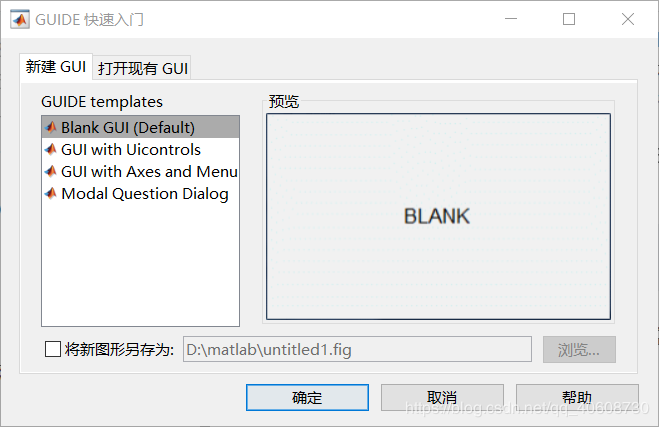
即可调出gui设计页面,选择第一个选项的空白GUI,然后点确定即可
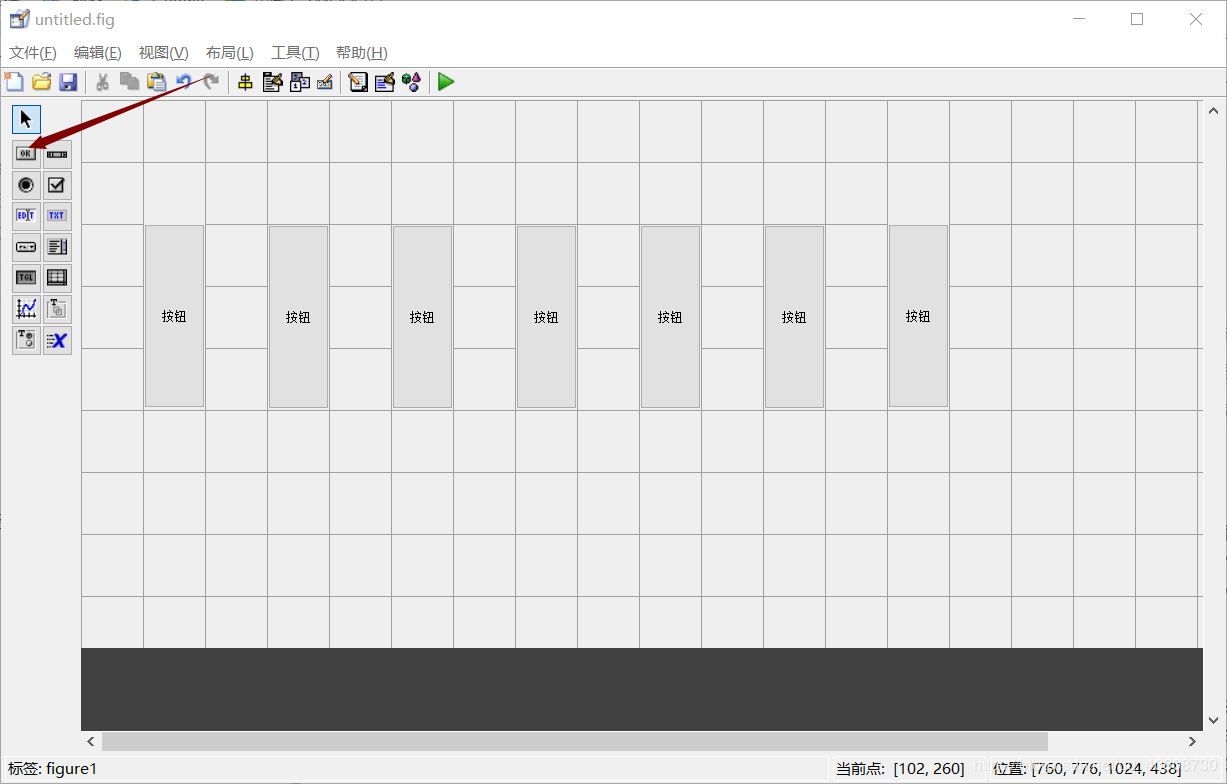
在工具栏的右侧选择按钮,在界面上画出一长方形代表按键,并用ctrl+c,ctrl+v创造出七个琴键,并对齐排列
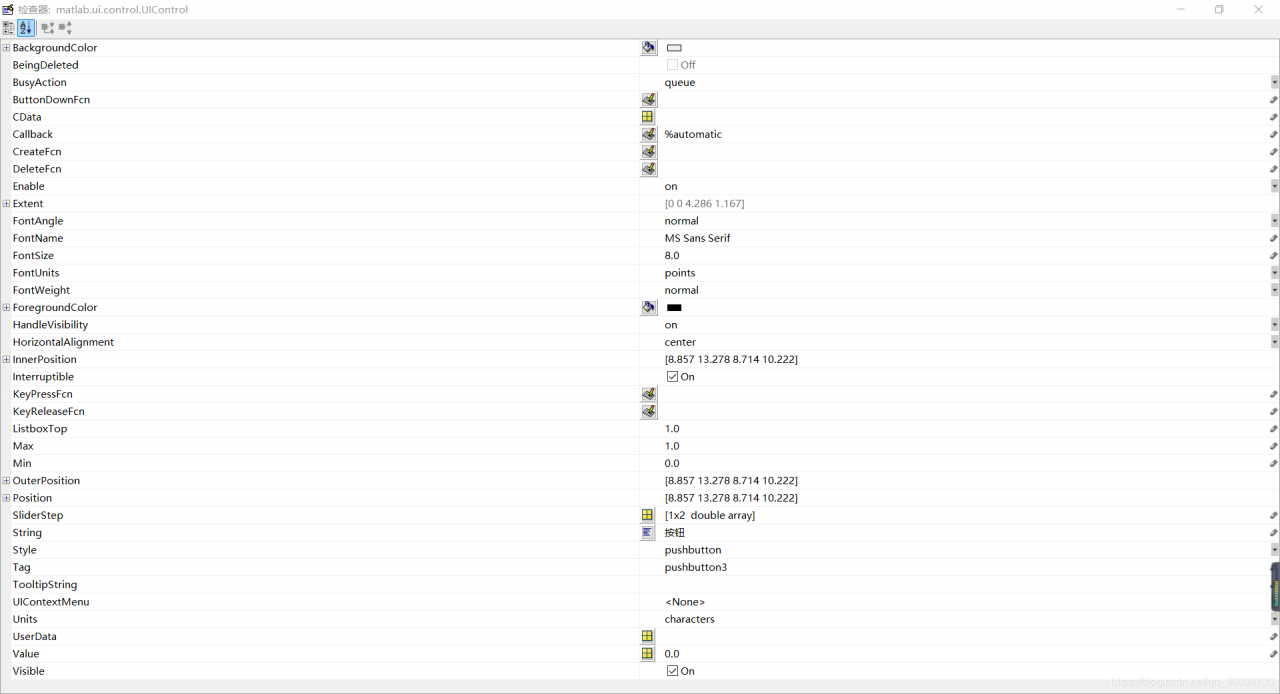
双击按键可打开具体的参数设置,其中有前景色、背景色、字体、标志、类型等,可以更加的个性化。

其中的STRING代表在GUI界面的名字,tag是生成的代码中的标志(在保存后还会生成一代码文件)
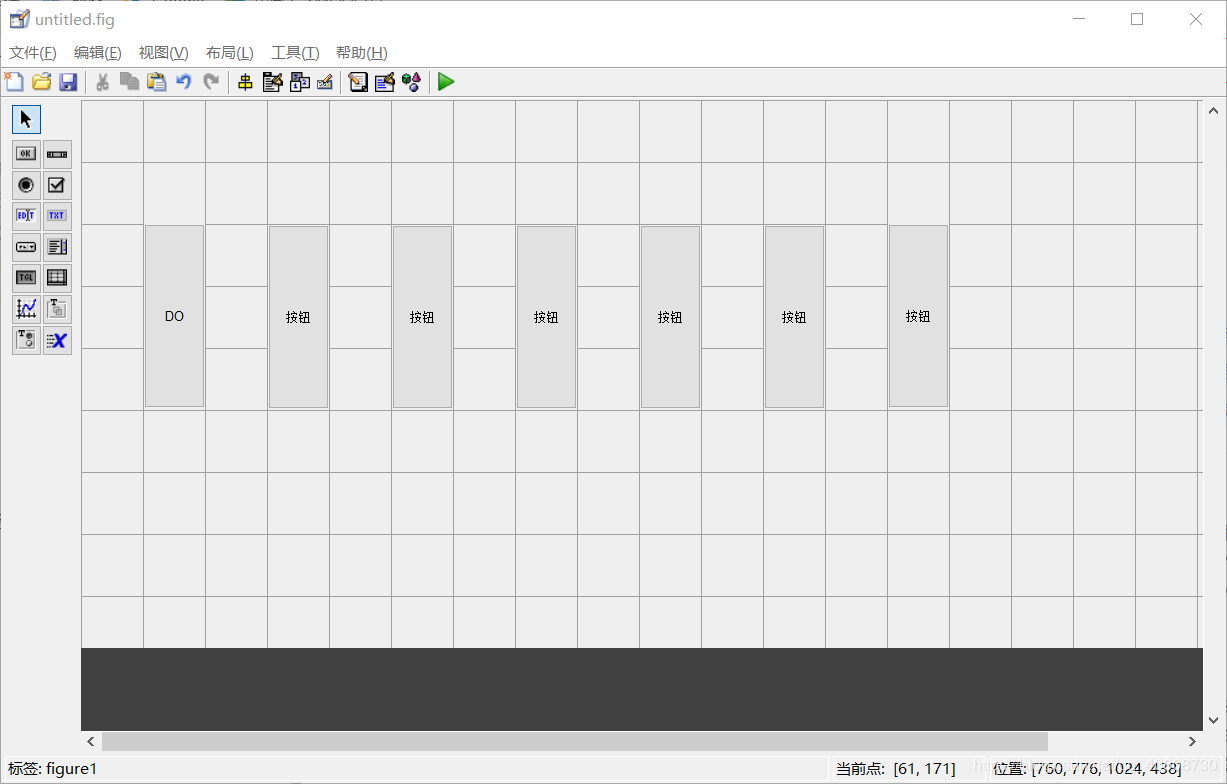
修改后即可看到第一个琴键的名字为DO,同理我们可以把其余其他按键命名,最后我们可以得到如下图所示:
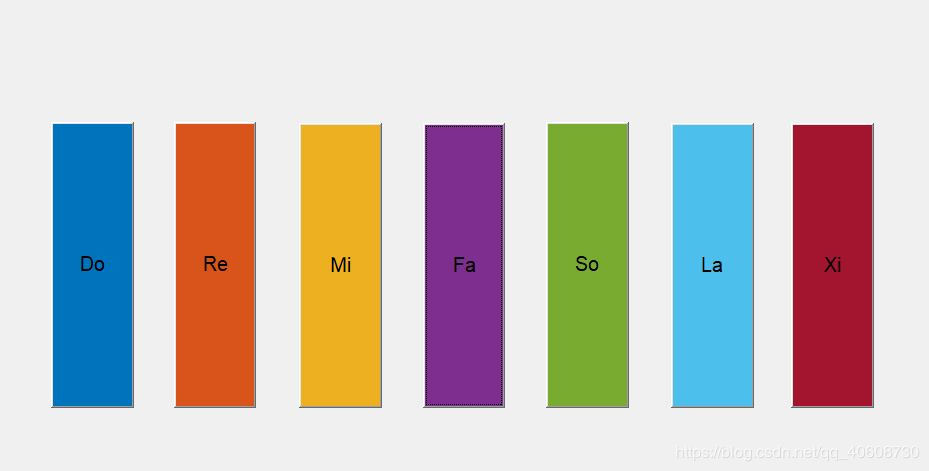
在保存之后会自动生成一代码,其中大部分我们不需要关心,我们要关注的就是其中的Do_Callback()等回调函数(Do是我们命名的tag使然),也就是我们按一次按键会执行一次回调函数。
function Do_Callback(hObject, eventdata, handles)
% hObject handle to Do (see GCBO)
% eventdata reserved - to be defined in a future version of MATLAB
% handles structure with handles and user data (see GUIDATA)
为了发出钢琴声我们还需要编写一发声函数,具体代码如下:
function y = gen_wave( tone, rythm )
% 音调 拍
Fs = 8192;
freqs = [523, 587, 659, 698, 783, 880, 988];
x = linspace(0, 2 * pi * rythm, floor(Fs * rythm));
y = sin(freqs(tone) * x) .*(1- x/(rythm * 2 *pi));
end
函数具体内容参见我的另一博客:MATLAB如何创造音乐
所以在DO按键的回调函数中应该这样写:
function Do_Callback(hObject, eventdata, handles)
% hObject handle to Do (see GCBO)
% eventdata reserved - to be defined in a future version of MATLAB
% handles structure with handles and user data (see GUIDATA)
y = gen_wave(1,1);
sound(y,8192);
同理在此给出所有代码:
function varargout = piano(varargin)
% PIANO MATLAB code for piano.fig
% PIANO, by itself, creates a new PIANO or raises the existing
% singleton*.
%
% H = PIANO returns the handle to a new PIANO or the handle to
% the existing singleton*.
%
% PIANO('CALLBACK',hObject,eventData,handles,...) calls the local
% function named CALLBACK in PIANO.M with the given input arguments.
%
% PIANO('Property','Value',...) creates a new PIANO or raises the
% existing singleton*. Starting from the left, property value pairs are
% applied to the GUI before piano_OpeningFcn gets called. An
% unrecognized property name or invalid value makes property application
% stop. All inputs are passed to piano_OpeningFcn via varargin.
%
% *See GUI Options on GUIDE's Tools menu. Choose "GUI allows only one
% instance to run (singleton)".
%
% See also: GUIDE, GUIDATA, GUIHANDLES
% Edit the above text to modify the response to help piano
% Last Modified by GUIDE v2.5 06-Feb-2020 16:54:20
% Begin initialization code - DO NOT EDIT
gui_Singleton = 1;
gui_State = struct('gui_Name', mfilename, ...
'gui_Singleton', gui_Singleton, ...
'gui_OpeningFcn', @piano_OpeningFcn, ...
'gui_OutputFcn', @piano_OutputFcn, ...
'gui_LayoutFcn', [] , ...
'gui_Callback', []);
if nargin && ischar(varargin{1})
gui_State.gui_Callback = str2func(varargin{1});
end
if nargout
[varargout{1:nargout}] = gui_mainfcn(gui_State, varargin{:});
else
gui_mainfcn(gui_State, varargin{:});
end
% End initialization code - DO NOT EDIT
% --- Executes just before piano is made visible.
function piano_OpeningFcn(hObject, eventdata, handles, varargin)
% This function has no output args, see OutputFcn.
% hObject handle to figure
% eventdata reserved - to be defined in a future version of MATLAB
% handles structure with handles and user data (see GUIDATA)
% varargin command line arguments to piano (see VARARGIN)
% Choose default command line output for piano
handles.output = hObject;
% Update handles structure
guidata(hObject, handles);
% UIWAIT makes piano wait for user response (see UIRESUME)
% uiwait(handles.figure1);
% --- Outputs from this function are returned to the command line.
function varargout = piano_OutputFcn(hObject, eventdata, handles)
% varargout cell array for returning output args (see VARARGOUT);
% hObject handle to figure
% eventdata reserved - to be defined in a future version of MATLAB
% handles structure with handles and user data (see GUIDATA)
% Get default command line output from handles structure
varargout{1} = handles.output;
% --- Executes on button press in Do.
function Do_Callback(hObject, eventdata, handles)
% hObject handle to Do (see GCBO)
% eventdata reserved - to be defined in a future version of MATLAB
% handles structure with handles and user data (see GUIDATA)
y = gen_wave(1,1);
sound(y,8192);
% --- Executes on button press in Re.
function Re_Callback(hObject, eventdata, handles)
% hObject handle to Re (see GCBO)
% eventdata reserved - to be defined in a future version of MATLAB
% handles structure with handles and user data (see GUIDATA)
y = gen_wave(2,1);
sound(y,8192);
% --- Executes on button press in Mi.
function Mi_Callback(hObject, eventdata, handles)
% hObject handle to Mi (see GCBO)
% eventdata reserved - to be defined in a future version of MATLAB
% handles structure with handles and user data (see GUIDATA)
y = gen_wave(3,1);
sound(y,8192);
% --- Executes on button press in Fa.
function Fa_Callback(hObject, eventdata, handles)
% hObject handle to Fa (see GCBO)
% eventdata reserved - to be defined in a future version of MATLAB
% handles structure with handles and user data (see GUIDATA)
y = gen_wave(4,1);
sound(y,8192);
% --- Executes on button press in So.
function So_Callback(hObject, eventdata, handles)
% hObject handle to So (see GCBO)
% eventdata reserved - to be defined in a future version of MATLAB
% handles structure with handles and user data (see GUIDATA)
y = gen_wave(5,1);
sound(y,8192);
% --- Executes on button press in La.
function La_Callback(hObject, eventdata, handles)
% hObject handle to La (see GCBO)
% eventdata reserved - to be defined in a future version of MATLAB
% handles structure with handles and user data (see GUIDATA)
y = gen_wave(6,1);
sound(y,8192);
% --- Executes on button press in Xi.
function Xi_Callback(hObject, eventdata, handles)
% hObject handle to Xi (see GCBO)
% eventdata reserved - to be defined in a future version of MATLAB
% handles structure with handles and user data (see GUIDATA)
y = gen_wave(7,1);
sound(y,8192);
再结合我们的 gen_wave()函数即可发出音乐声(有时候刚开始可能会有一些延迟。。。)
以上就是用MATLAB的GUI如何设计钢琴界面并能发声的教程了,如果感觉有意思,点个赞,O(∩_∩)O哈哈~
参考博客:GUI基本知识
gen_wave函数设计
作者:啥也不会的刘同学